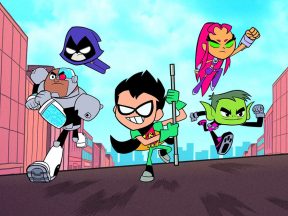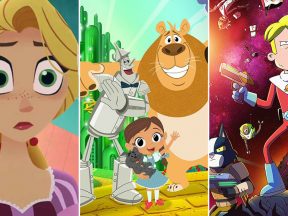

Toronto’s Swaggering Animation Scene Is In A Golden Age, But Faces Challenges Old And New
This is part four of an ongoing series that profiles Canada’s major animation production centers. Links to profiles of other Canadian cities at the end of this article.
Toronto: the city that the rest of Canada loves to hate. From the 1970s onwards, the city — “The Big Smoke”, “The 6,” “Hogtown” — was the hotspot for commercial animation. If you wanted steady and cool work, then Toronto was the place to be.
As early as the 1940s, there were commercial houses like Graphic Visuals (owned by Jim McKay and George Dunning). In the 1960s, Rocket Robin Hood, one of the first Canadian animated series, was produced by Trillium Productions, part of the group of companies known as the Guest Group (which was headed by Al Guest and Jean Mathieson, one of Canada’s first female animators). And in 1968, Canada’s first animation course started up at Sheridan College (technically not in Toronto but in nearby Oakville, Ontario).
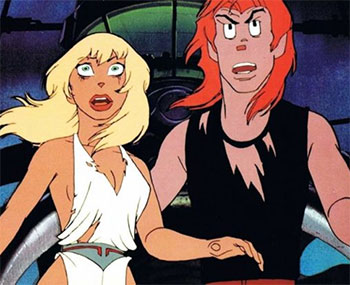
The 1970s and 1980s were dominated by Nelvana. Founded by Clive Smith, Michael Hirsh, and Patrick Loubert, Nelvana animated the Boba Fett sequence for the infamous Star Wars Holiday Special (1978), and produced the cult classic feature (and box office bomb) Rock & Rule (1983). After the failure of Rock & Rule, the company took a safer route and started making tv animation for kids. It found immediate success with shows like Care Bears and Inspector Gadget.
The Toronto animation scene exploded in different directions in the late 1980s and into the 1990s. Teletoon, Canada’s first animation tv channel, turned on in 1997. Innovative software companies were born, like Side Effects (1987) and Alias Wavefront (1995), as were experimental boutique studios like Cuppa Coffee Animation (1992). In 1996, Chuck Gammage (a graduate of Sheridan who also worked for Nelvana) started up Chuck Gammage Animation. He later helped found (with Frank Falcone and Anne Deslauriers) one of Toronto’s most successful animation studios, Guru Studio.
City life
Today, the Toronto scene continues to thrive and diversify. There is no shortage of studios: Spin Master, House of Cool, Elliott Animation, Tangent Animation, Wildbrain (formerly DHX Media), Jam Filled Entertainment, Snowball Studios, Skyship Entertainment, Sinking Ship Entertainment, 9 Story Media Group, Boat Rocker Media (which includes Jam Filled Entertainment and Industrial Brothers), and Head Gear Animation.
Schools like Seneca College and Max the Mutt College of Animation, Art & Design now complement Sheridan College. Events like Toronto Animated Arts Festival International (TAAFI) have been set up to celebrate the industry scene. The co-op, Toronto Animated Image Society (TAIS), has become a steady source of independent-inspired animated shorts and vr projects.
So the Toronto scene continues to blossom — but does it have the same lure it once did for aspiring animators? Given the city’s insane real estate market, the rise of animation production in smaller Canadian cities (Halifax, Ottawa), the continued expansion of animation in larger cities (Vancouver, Montreal), and the ability of artists to work remotely, has Toronto lost some of its swagger?

“Toronto is still hot for animation, though now more diversified,” says Ricardo Curtis, president of House of Cool. “The cost of living in Toronto is an issue, but that trade-off is balanced by the desire of animation professionals to want to live in a diverse metropolitan area. I would guess that most of the people in the industry have not been able to save enormous amounts of their income, but the quality of their lives and experiences in a big city equals the sacrifice. With that said, most of the industry is paid well.”
Industry veteran Mike Valiquette, owner of the studio Go Lucky and founder of the Cartoon North blog, adds, “People are leaving Toronto and that has more to do with Toronto than the studios we’re working for. It’s still the hub; business gets done here. But a large chunk of the workforce can just decide what they want to see when they look out the window. Is it the CN Tower and rows of condos? Or is it a maple tree in your own backyard? Studios don’t need to convince anyone. They need to attract talent with good pay and interesting work, and by treating artists fairly. Studios will need to accept that [post-Covid] they may only be employing 30%–60% of the in-house workforce they used to, that artists will be more discerning in their choice of employer, and that building a creative environment where key in-house talent can truly thrive is going to be more important than ever.”
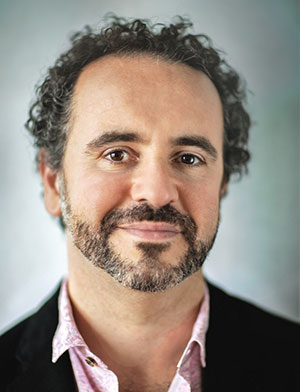
Long before Covid, Guru had a work-from-home pipeline in place. Frank Falcone, the studio’s president and executive creative director, says, “The virtual studio model has worked so well that people with good home set-ups and a reliable internet connection have been able to work effectively in our pipeline without having to ever come to the physical studio. We can now, theoretically, hire anyone from anywhere in the world — but we are still bound by the tax credit restrictions that require our employees to be residents of Ontario. That factor is baked into our budgets, and projects that come to our region are looking for this discount. Talent that is unwilling to move to the Big Smoke can be employed through other regional tax credits if we can grow a critical mass of employees throughout these new regions. That means we can have teams in any and every region that has a comparable, or even preferable, tax credit regime in place.”
The new normal
We keep hearing about how animation companies are continuing to flourish during the pandemic. Toronto, to a degree, is no exception. “The industry appears to be thriving insofar as service work goes,” George Elliott, president of Elliott Animation. “Proprietary is another matter and is much more difficult to finance than ever before. Many studios are ramping up their service capacity to compensate, but that creates other issues in the industry.”
Despite the continued workload, the pandemic has created a new set of major and minor challenges for animation studios.
“The sheer volume of emails and digital meeting requests,” continues Elliott. “It’s a lot more information to track. Also, it is more difficult and time consuming to communicate exclusively by remote than face to face.”
“While we’re saving time and money with lack of commute time, there are other things that chew up those savings,” adds Jane Crawford, Nelvana’s head of studio. “Digital meetings — even for small things, when you would just get up and walk down the studio to say something quick to someone. Now we have to schedule a call. Technical downtime and getting IT support. Inconsistent wi-fi connections. Uploading and downloading large files can take longer than in studio — all of this adds to the day.”
“The other issue is that training has been a challenge,” notes Curtis. “New artists, interns, and producers learn through osmosis, and seniors share their knowledge through serendipitous interactions throughout the day. Covid has killed that, so we had to put an extra effort into supporting our new talent.”
As we’ve seen in the rest of Canada, Toronto, even in the face of Covid, is experiencing a boom in animation production. “Streamers have definitely made another golden age for animation,” Curtis continues. “There are all types of content being produced right now — genres, subject matter, and budgets that were unheard of even a few years ago. While there has been a fall-off in other parts of the industry, on balance animation is very healthy.”
Winds of change
At some point, this “golden age” is going to end or shift, especially in light of economic uncertainty around the pandemic. Are studios prepared for this eventual drop-off?
According to Falcone, “It feels as though the launch of all the new video-on-demand platforms will continue this trend, at least for the next two or three years, at which point some sort of consolidation will naturally happen. There is too much content to watch – let alone to become a repeat-viewing super fan!”

“In my opinion,” says Curtis, “Covid’s biggest impact on the animation industry is that you will see way fewer feature films. It is unlikely that the theater industry will ever recover, therefore leading to less spending on the high end of budgets. Fortunately, series production will more than make up for the decline of features.”
“There is a shift happening from proprietary content to service work,” says Elliott. “When the sources of our service work decide we are too expensive, the work will diminish. When this will happen depends on many factors beyond our control, such as government regulatory changes, greater opportunity (sometimes) in the U.S., the lure of working for a big studio the likes of which Canada does not have, wanderlust, disruptive technological change, and the strength/weakness of our dollar relative to the USD. As to the future, I see the trend toward service work continuing, and reduced ownership retention for the rare proprietary ideas that gain financing. I see Canadian producers developing sources and means for financing outside Canada and outsourcing work to countries with lower labor costs.”
Affable Canadian stereotypes
While there is no doubting that Canada has put out some fine tv animation over the years, it has never produced a series as timeless and popular as, say, The Simpsons or Family Guy (and sure, Canada is not alone in that failure). When we do produce more “adult” animation, it tends to be very Canada-specific (e.g. Corner Gas Animated). Is this the fault of restrictive Canadian content (Cancon) or tax credit regulations? A lack of good writers? Broadcasters’ unwillingness to take on riskier stuff?
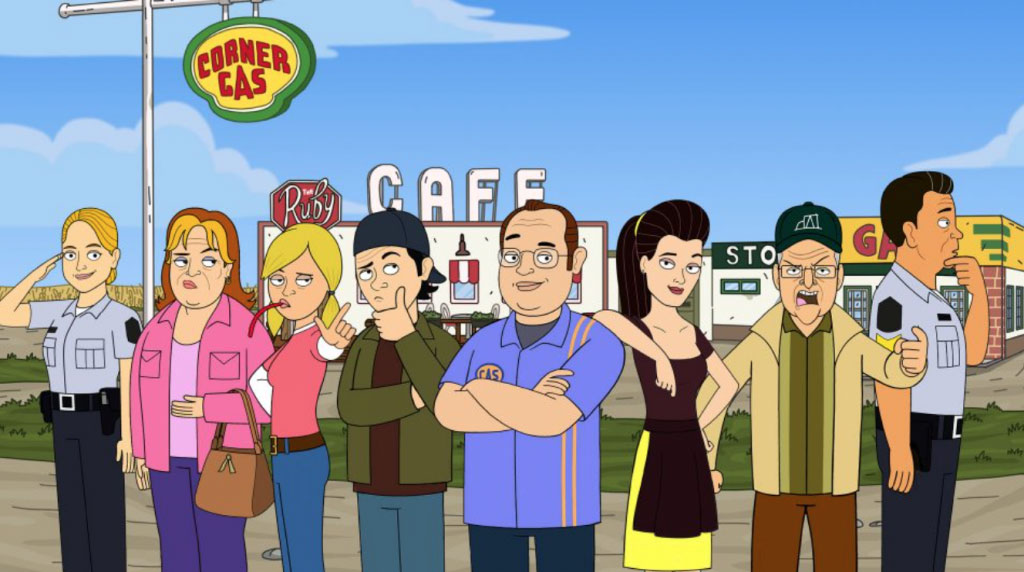
“The U.S. has a culture of supporting creator-driven series, whereas Canada supports the writer and producer first and the creator second,” says Curtis. “In my view, clarity of vision is needed to achieve greatness. Leadership by consensus more often results in serviceable but not great content. The U.S. model can also lead to spectacular failures, but they are more risk tolerant than we are in Canada. It is difficult to buck that trend.”
“Canada’s industry has not been built around original content,” says Elliott. “The way that tax credits have been structured, it is much easier to make an income by passing on the savings to other content creators than taking the risk of creating our own content … There is not enough support from private money to make [this kind of risk] viable on a large scale.”
Falcone argues that the projects that get funded in Canada — in animation, but also entertainment in general — “tend toward the hyper-regional, and so always feature affable self-styled Canadian stereotypes: “hosers” in small towns, like in Corner Gas, The Red Green Show, Trailer Park Boys, Bob and Doug.”
But Elliott counters that outside adult animation, many Canadian shows have found global success, among them Care Bears, The Raccoons, Arthur, Babar, Caillou (which was recently parodied on Family Guy), Franklin, Inspector Gadget, and Paw Patrol. “This is a strong showing considering we are less than half the population of the U.K. or France and one tenth the population of the U.S.”
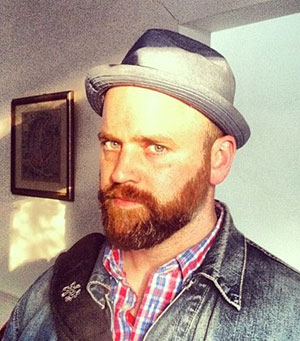
“We’re risk-averse,” says Valiquette. “As a culture in general, and as an industry specifically … Cancon rules are problematic, but I totally support why they’re there. Now if we could just pay people as much as they do in the States, maybe more of the good ones would stay here. I also think we need to stop rewarding mediocre talent. Just because you have a couple features on your resume doesn’t mean you’re good at making them. Take a chance on someone with a little vision, some real passion, and way less shitty credits.”
“Canadians are risk averse, and why not?” adds Falcone. “We live very comfortably in a great country! I truly believe that necessity is the mother of invention. As we mature as a nation and as an entertainment hub, we might start to see activity around the fringes that starts to throw caution to the wind.”
(Image at top: “Mecha Builders,” a series that Guru Studio is producing with Sesame Workshop for HBO Max.)

.png)

